Center for Cultural Landscape Preservation
About CCLP
The Center for Cultural Landscape Preservation was formed to coordinate, expand, and disseminate the work that the SUNY ESF Department of Landscape Architecture has undertaken in cultural landscape preservation over the past two decades, including historical research, landscape inventory and evaluation, and design strategies for landscape treatment. This work has been accomplished through partnerships with faculty from landscape-related disciplines at ESF and with public agencies and non-profit organizations, notably the National Park Service's Olmsted Center for Landscape Preservation and the New York State Office of Parks, Recreation and Historic Preservation.
The Center provides students with a variety of opportunities to explore the field of cultural landscape preservation, gain practical experience, and fulfill academic requirements. Through the Center's partnerships, many students have received financial support in the form of tuition waivers and stipends. Related coursework in historic preservation and natural resources is available at Syracuse University and in other departments within ESF. Opportunities include cultural landscape seminars and studios, summer field schools at national parks, independent research, and preparation of reports that document a landscape's history and plan its future management. Several projects have involved interdisciplinary work to address relationships between natural and cultural resource management. While these opportunities focus on cultural landscape preservation, they also provide training relevant to other fields of landscape architectural practice.
What is Cultural Landscape Preservation?
Cultural landscapes, from private gardens and urban neighborhoods to farms and large national parks, are tangible records of our history. They are the physical reminders of great events that define generations, as well as everyday patterns that provide a sense of place for communities large and small. As defined by the National Park Service, a cultural landscape is "a geographic area, including both cultural and natural resources and the wildlife or domestic animals therein, associated with a historic event, activity, or person, or that exhibit other cultural or aesthetic values" (Guide to Cultural Landscape Reports, 1998). These may include historic sites, historic designed landscapes, historic vernacular landscapes, and ethnographic landscapes.
The field of cultural landscape preservation is about the stewardship of significant landscapes for the enrichment of present and future generations. It involves historical research, inventory of existing conditions, and evaluation of historic significance to document and understand a landscape's historic character and change over time. Planning and design are also important aspects of preservation that are necessary to enhance historic character and contemporary function. The field also includes preservation maintenance that addresses the upkeep of a historic landscape, from materials conservation of built features to horticultural practices for annual plantings. Over the past two decades, cultural landscapes have become a focus of historic preservation efforts across the country and an important practice within the profession of landscape architecture. In the context of growing homogeneity and change, landscape preservation is an increasingly important part of environmental stewardship that bridges cultural and natural values.
A Brief History
The origins of the Center for Cultural Landscape Preservation trace back to the early development of the field within the profession of landscape architecture. For over 40 years, cultural landscapes have been the subject of classes, studios, research, and community service in the SUNY ESF Department of Landscape Architecture.
Early Cultural Landscape Studies
With foundations in the early 20th century geographic scholarship of Germany, France, and Great Britain, the idea of a “cultural” landscape was introduced into American intellectual history in 1925 by human geographers attempting to reassert the agency of culture within debates over the influence of environment in shaping human societies. Since its introduction into the English language, the landscape idea has always been inherently cultural; however, at times it is necessary to re-center culture in the study of landscapes. This is when and how the term cultural landscape is used—as a tool to call attention to landscapes as human artifacts, especially when those landscapes are in danger. By the late-20th century it was again necessary to challenge prevailing orthodoxy with the cultural landscape idea. In the 1970s, landscape architects began to assert that landscapes were indeed historical artifacts worthy of preservation. Over the following two decades, the American historic preservation field embraced the importance of cultural landscape preservation, moving beyond the traditional emphasis on buildings and structures. Broad constituencies at the federal, state, and local levels embraced the importance of preserving historically significant cultural landscapes, from gardens, residential streets, and urban plazas, to rural communities, farms, parks, and parkways.
Initial Research
Preservation of cultural landscapes posed many perplexing questions to a field long focused on building preservation. A building, for example, could clearly be described by its structural components such as doors and roofs; what were the parallel components of a landscape? Buildings evolved over time in clear sequences of construction and renovation; how should the history of a landscape, with its dynamic natural resources, be documented and evaluated? The Department of Landscape Architecture was well positioned to take on such research questions.
The earliest preservation-oriented research in the department was undertaken by graduate students. One of the early theses to address preservation was written in 1974 by Robert Melnick (MLA 1975), titled “The Development of an Historical Conservation Process for American Towns”. This began a long period of study and research of rural conservation issues in studio and independent research. By 1990, graduate students had begun research on the history, significance, and treatment of cultural landscapes according to methods recently developed by the National Park Service. These early studies included Christine Capella Peters' 1990 thesis that adapted the Secretary of the Interior's Standards to cultural landscapes; Constance Zipperer's thesis on the preservation of Thornden Park, an early twentieth-century city park in Syracuse; and Richard Collins' 1991 "Historic Landscape Report" for Meadowcrowft, a late nineteenth-century country place in Sayville, Long Island.
In 1991, as government agencies and not-for-profits were beginning to refine early methods of cultural landscape preservation, two major developments for delivering services to the public were established at SUNY ESF. The first was development of a rural community design workshop program, a joint venture with the National Trust for Historic Preservation and sponsored by the National Endowment for the Arts. The program, now known as “Your Town: The Citizens’ Institute on Rural Design, (http://www.yourtowndesign.org/) would eventually include sixty workshops delivered throughout the United States that provided residents with the tools needed to conserve the character of their rural communities.
The second development was a cooperative agreement with National Park Service to assist with its emerging Cultural Landscape Program. Working with the Northeast Region of the park service, the department entered into a five-year cooperative agreement between 1991 and 1996 to develop and test methods for cultural landscape documentation, evaluation, and treatment. Headed by Distinguished Teaching Professor George W. Curry, this agreement supported the preparation of cultural landscape studies by graduate students in landscape architecture. The initial projects included preparation of cultural landscape reports at the Laboratory Unit of Edison National Historic Site in Orange, New Jersey (Eric Joseph, MLA 1993, with David Uschold), Sagamore Hill National Historic Site in Oyster Bay, New York (Gina Bellavia, MLA 1994), and Martin Van Buren National Historic Site in Kinderhook, New York (David Uschold, MLA 1994). The department also received funding to test a format for the park service’s Cultural Landscape Inventory, a system-wide database for cultural landscapes. The department worked on case studies at several national park units in New York during the early 1990s, including Women’s Rights National Historical Park in Seneca Falls, Fort Stanwix National Monument in Rome, and Franklin D. Roosevelt National Historic Site in Hyde Park.
Much of this initial sponsored research was undertaken through a cooperative agreement with the National Park Service's Olmsted Center for Landscape Preservation, a program of the Northeast Region established in 1992 to assist parks with protecting and preserving their cultural landscapes. SUNY ESF was one of the Olmsted Center’s first partners. Others have included the Arnold Arboretum of Harvard University, the University of Pennsylvania, the University of Massachusetts-Amherst, and Historic New England.
Based on the success of the National Park Service work, the department entered into a second cooperative agreement for cultural landscape research in 1995 with the Central Region of the New York State Office of Parks, Recreation and Historic Preservation. Using the methods developed for the national parks, graduate students in the department developed cultural landscape reports for some of the state’s most important landscapes, beginning at Lorenzo State Historic Site in Cazenovia (Paul Fritz, MLA 1997) and Herkimer Home near Little Falls (Barbara Henderson, MLA 1999).
Recent Work
The Department of Landscape Architecture has renewed these cooperative agreements numerous times to continue its research and service-learning work in cultural landscape preservation. Since 2000, the Olmsted Center has supported a staff position at SUNY ESF to assist with student research and training while enhancing parks’ ability to care for their cultural landscapes. Many students have used research projects as all or portions of their thesis and capstone studio subjects, as summer internships, and as graduate research assistantships. The department has also used several park service projects as subjects for thematic studios dealing with the treatment of cultural landscapes. While most of the projects have focused on preservation planning, others have addressed landscape maintenance, park planning, and interdisciplinary issues involving faculty in the departments of Biology and Forest and Natural Resource Management. (Go to Research for a complete listing and description of cultural landscape research projects.)
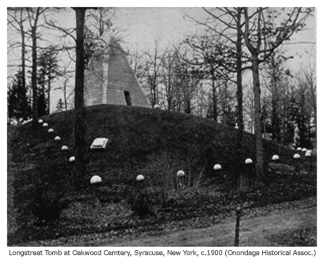
Partnerships
Through partnerships, students have been able to work on and contribute to the management of some outstanding landscapes. Since 1996, students have been involved with a variety of studies at the Home of Franklin D. Roosevelt National Historic Site, and the Eleanor Roosevelt National Historic Site in Hyde Park, New York. A recent multi-year project is developing a three-volume cultural landscape report for the 2,000-acre Marin Headlands at the Golden Gate National Recreation Area across the bay from San Francisco, California. The Center will continue to provide this type of outstanding opportunities for the students, and in so doing contribute to the growing body of knowledge in the field of cultural landscape preservation.
CCLP Partners
- National Park Service, Olmsted Center for Landscape Preservation
- New York State Office of Parks Recreation & Historic Preservation
- Canal Society of New York State
- Matilda Joslyn Gage Foundation
- Student Conservation Association
People
George W. Curry, FASLA
Emeritus Director
Department of Landscape Architecture
SUNY College of Environmental Science and Forestry

George serves as co-director of the Center for Cultural Landscape Preservation. Over the past three decades, he has been involved with a variety of preservation activities. He was a member and chair of the Syracuse Landmark Preservation Board for 13 years. He is a general partner in three multiple-use tax act rehabilitation projects in downtown Syracuse. Since 1991 he has been project director of a number of Cultural Landscape Reports under a cooperative agreement with the National Park Service and the NYS Office of Parks, Recreation and Historic Preservation. George has a BA in Economics and a BSLA from Michigan State University, as well as a MLA from the University of Illinois.
John Auwaerter, ASLA
National Park Service Partner and Instructor
Department of Landscape Architecture
SUNY College of Environmental Science and Forestry
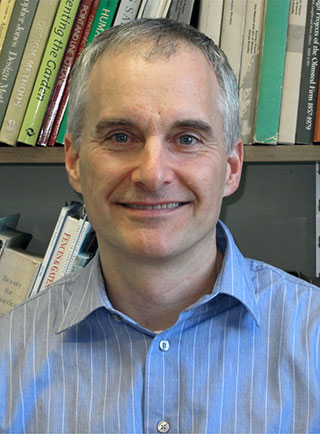
John serves as co-director of the Center for Cultural Landscape Preservation and is a National Park Service partner with the Olmsted Center for Landscape Preservation. Since 2000, he has held a joint position as a SUNY Research Scientist and National Park Service Historical Landscape Architect. John’s expertise pertains to applied research in cultural landscape preservation, including historical research, National Park Service and National Register methods of evaluation, planning and treatment, and graphic mapping. His work has addressed preservation issues at historic gardens and residential landscapes, military bases, cemeteries, and parks, as well as greenhouses and reforestation. John teaches LSA 481/681 Cultural Landscape Preservation (offered in the spring), and served for 10 years on the Syracuse Landmark Preservation Board. He holds an AB in American history with a minor in architectural studies from Middlebury College, an MA in historic preservation planning from Cornell University, and a MLA from SUNY College of Environmental Science and Forestry.
Aidan Ackerman, ASLA
Assistant Professor
Department of Landscape Architecture
SUNY College of Environmental Science and Forestry
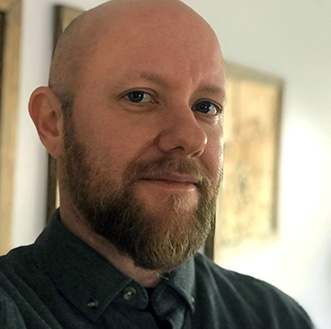
Aidan Ackerman researches issues of cultural landscapes, climate change, and landscape performance using digital technology. These tools allow the simulation and visualization of past, present, and future landscapes shaped by history, culture, and ecology. He teaches 3D modeling, parametric and algorithmic modeling, rendering, animation, GIS, BIM, virtual reality, and digital fabrication. During his time with ESF's Center for Cultural Landscape Preservation he has worked on digital visualization projects for the Statue of Liberty National Monument, Gettysburg National Military Park, Eisenhower National Historic Site, and Flight 93 National Memorial.
Robert Page (BLA, 1984) FASLA
Director, Olmsted Center for Landscape Preservation
National Park Service, Northeast Region
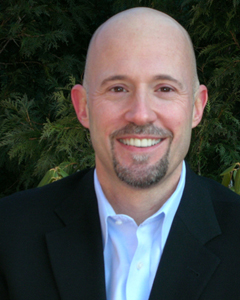
Bob is Director of the Olmsted Center for Landscape Preservation in Boston, MA. The Olmsted Center is a National Park Service program that provides a full range of technical assistance to national parks in cultural landscape preservation. Bob is responsible for overseeing a comprehensive landscape preservation program that includes inventory, research, planning, education, and technology development. Prior to assuming this position, he served for ten years as the program manager for the National Park Service Park Cultural Landscapes Program in Washington, DC. During the past 20 years, he has been involved with the development of policies, programs, and standards for cultural landscape management in the national park system. This work includes coordinating the National Park Service Cultural Landscapes Inventory, a service wide inventory of all cultural landscapes in the system; co-authoringA Guide to Cultural Landscape Reports: Process, Contents, and Techniques; and overseeing the preparation of cultural landscape reports and landscape preservation maintenance in national parks throughout the United States. In 2007, he was inducted as a Fellow in the American Society of Landscape Architects.
Christine Capella Peters (BLA 1980, MLA 1990)
Preservation Consultant
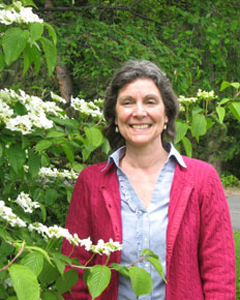
Christine Capella Peters has been involved in historic preservation for more than 35 years. She retired in 2014 from the New York State Historic Preservation Office, where she was a technical staff member providing assistance to individuals, organizations and local governments interested in the State and federal preservation programs. The bulk of her time was spent reviewing physical undertakings affecting historic and cultural resources. She was an urban planner/designer for nearly a decade previously. As a visiting professor and professional adjunct for over 20 years, she worked with students at a variety of colleges and universities lecturing, teaching design studios, and serving on thesis committees for urban design, historic preservation and cultural landscape preservation projects. Most recently, in Spring 2017 she was co-instructor of a thematic design studio that made recommendations for development of the new Harriet Tubman National Historical Park in Auburn, NY, and advised a graduate student project to develop a cultural landscape report for the Rose Hill mansion landscape in Geneva. Chris has been an invited speaker and panel participant at numerous national and regional conferences, as well as a guest editor and reviewer for many publications. She is co-editor of The US Secretary of the Interior’s Standards for the Treatment of Historic Properties and the Guidelines for the Treatment of Cultural Landscapes (US Department of the Interior, National Park Service, 1996). Through both research and practice, Chris has become a recognized expert within the preservation community in the area of cultural landscape preservation. Additionally, she has a long history of public service in Syracuse, serving on the boards of several organizations, most notably the University Neighborhood Preservation Association and Onondaga County Citizens League. She also has been appointed to several municipal bodies, including the Syracuse City Planning Commission and Syracuse Public Art Commission.
Richard S. Hawks, FASLA
Department Chair, 1986 - 2013
SUNY Distinguished Service Professor (Emeritus)
Department of Landscape Architecture
SUNY College of Environmental Science and Forestry
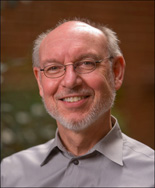
Professor Richard S. Hawks has been the Chair of the Department of Landscape Architecture at SUNY ESF since 1986. His historic preservation-related experience includes service on the Board of Advisors for the National Trust for Historic Preservation from 2001 to 2007, and founder and co-director ofYour Town, A Citizen's Institute for Rural Design,funded by the National Endowment for the Arts. Your Town provides workshops on the importance of design and planning for leaders of small communities. Since 1990, there have been over 1,200 participants in over 59 workshops held in 32 states. The Your Town program has received a variety of awards including 1996 American Society of Landscape Architects (ASLA) Honor Award, and 1997 National Planning Award for Public education from the American Planning Association. Richard's other academic and professional experience includes a current position as ASLA Vice President for Education and the Chair of the Landscape Architecture Accreditation Board (LAAB). In 2006 and 2007, he was a member of the ASLA national student and professional awards juries. Richard was inducted as a Fellow of the American Society of Landscape Architects in 2000. He is an active member of the CEO Roundtable representing the academic community since the group's inception in 1998. Richard is past president of the Council of Educators in Landscape Architecture (CELA); in 2004 he received the CELA Outstanding Administrator Award and was inducted as a CELA Fellow in 2009. He received a BSLA from SUNY ESF and his MLA from Harvard University Graduate School of Design.
Chris Nowak, Ph.D.
Professor of Forestry
Department of Forest and Natural Resource Management
SUNY College of Environmental Science and Forestry
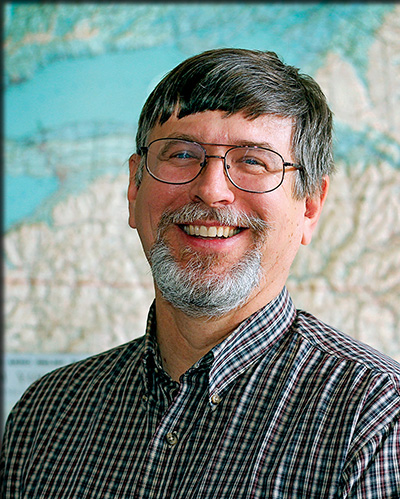
Dr. Christopher Nowak is a Professor of Forestry at the College of Environmental Science and Forestry. Prior to joining the Department of Forest and Natural Resources Management in 1998, he worked for 5½ years as a Research Forester at the U.S. Forest Service’s Forestry Sciences Laboratory in Pennsylvania. He also worked for six years as a Research Scientist with the Research Foundation of SUNY in Syracuse. He holds an Associate in Applied Science degree in Forest Technology from SUNY ESF – Wanakena (’79) and Bachelor of Science (’85), Master of Science (’86) and Doctoral (’93) degrees in Forest Resources Management from SUNY-ESF, Syracuse. His experience in forest ecology, silviculture and vegetation management extends back over 25 years with research, teaching and service related to power line corridor, highway and pipeline rights-of-way vegetation management, and intensive and extensive silviculture in fast-growing hardwood plantations and natural, northern conifer and hardwood forests across Northeastern North America. Dr. Nowak has recently worked on a series of cultural landscape related projects with the National Park Service in Hyde Park, New York, with studies on viewshed management, assessment of historic conifer and hardwood plantations, and inventory as a basis for strategic planning for a working forest on the FDR and Vanderbilt historic sites.
